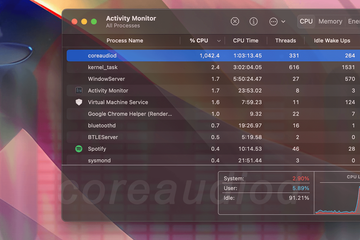Here is a summary of the issue where a process named coreaudiod slows a Mac down to a crawl due to insanely high CPU and memory consumption.
What is coreaudiod on your Mac?
If you are a Mac user who never needed to explore Activity Monitor stats, lucky you. That’s likely because everything has been consistently smooth for you in terms of the machine’s performance. However, this is an ideal-world story and more the exception than the rule. The truth is that lots of people encounter issues with specific processes once in a while, and this mostly comes down to computer productivity impacts that are too high to tolerate. There are topics on tech forums galore about such problems, and in recent months, many of these threads have been about something called coreaudiod. The associated bug manifests itself through swamping the Mac’s CPU capacity, which leads to system slowdown, kernel panics, noisy fans, and as a result, a ruined user experience.
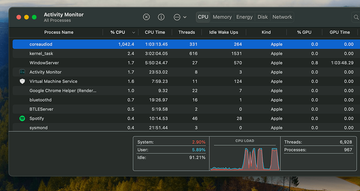
Let’s look at what coreaudiod is to get a better idea of what can make it act up. The name itself is obviously quite verbose. Judging from the “d” in the end, it’s a daemon, that is to say, a process that runs in the background and performs auxiliary tasks supporting certain aspects of the system’s functionality. So, this is a core audio daemon whose chores span everything related to playing, recording, editing, compressing and decompressing, as well as synthesis of audio data in its various forms. The binary, which resides at /usr/sbin/coreaudiod, is started and managed by a higher-level system daemon called launchd. On a side note, this is a cross-platform entity constituting a sound-related API within Apple’s ecosystem that also works on iOS, iPadOS, tvOS, and watchOS. At the time of writing, though, macOS appears to be the only environment that bears the brunt of its misbehavior.
The coreaudiod high CPU and memory virus may re-infect your Mac multiple times unless you delete all of its fragments, including hidden ones. Therefore, it is recommended to download Combo Cleaner and scan your system for these stubborn files. This way, you may reduce the cleanup time from hours to minutes.
Download Now Learn how Combo Cleaner works. If the utility spots malicious code, you will need to buy a license to get rid of it.According to numerous reports, the coreaudiod process usually starts monopolizing CPU resources after a major (not supplemental) update of the operating system. When there is no activity involving sound, it tends to stay idle and doesn’t cause any inconveniences. However, whenever audio is on – whether the user opens a YouTube video, listens to a recorded track, watches content through a TV app, or plays a video game, especially with an audio enhancer, the daemon under scrutiny goes wild gobbling up the central processing unit’s power. The issue also occurs with wired or Bluetooth speakers plugged in. When the system or an app generates a simple sound notification, coreaudiod CPU usage might spike briefly too and then go back to normal.
Incidentally, some people are perplexed over the fact that processor utilization by coreaudiod might sometimes go above 100%. In the screenshot above, for instance, it exceeds 1,000%. There are two things that make it possible. First, this happens when more than one CPU core is maxed out. Modern Macs are equipped with up to 16-core chips. Second, this paradox can be an upshot of what’s called hyperthreading, a technology that allows multiple threads to be executed on each core. Therefore, those mind-boggling numbers don’t mean that the system is misinterpreting the relevant metrics. It’s just a matter of the chip architecture and the intelligent ways it handles resource-intensive tasks.
Now, the big question about coreaudiod is how to tame its appetites so that the Mac operates in a frictionless way and doesn’t get bogged down in terms of productivity. A good starting point to troubleshoot this drag is to look for a sound-related app that might be the culprit. A misconfigured or crudely designed third-party utility, such an audio editor, can cause such symptoms and is the usual suspect. Uninstalling a program like that, if any, should do the trick. Another possibility is that a macOS update didn’t go as intended due to a sudden interruption of the internet connection, or if the process was paused because of low battery and then resumed. These factors are potential catalysts for the incorrect work of background system processes.
There is one more hypothesis. Coreaudiod might malfunction when malicious software kicks in. Spyware is likely to collect audio data alongside other sensitive information. Some malware species try to modify legitimate processes to prevent system defenses from detecting and blocking them. A far more intricate tactic is to mimic system binaries for the same AV evasion purpose, in which case coreaudiod can be a copycat daemon. All these styles of attack will typically be accompanied by excessive CPU usage. It’s worth emphasizing that the security theory is merely one point on the checklist. While this scenario is less probable than the others, it makes sense to check your Mac for malware and remove it if spotted. The following sections of this article should put your troubleshooting efforts on the right track.
Coreaudiod high CPU virus manual removal from Mac
The steps listed below will walk you through the removal of this malicious application. Be sure to follow the instructions in the specified order.
Expand the Go menu in your Mac’s Finder bar and select Utilities as shown below.
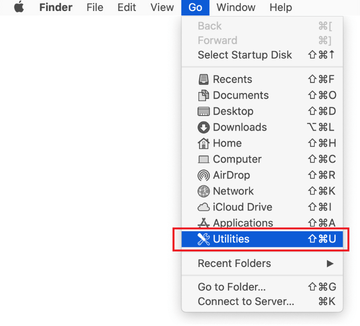
Locate the Activity Monitor icon on the Utilities screen and double-click on it.
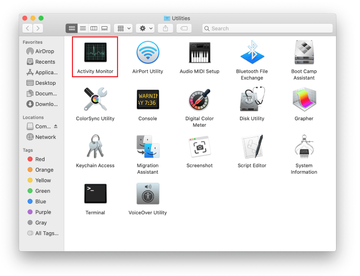
In the Activity Monitor app, look for coreaudiod or another process that appears suspicious. To narrow down your search, focus on unfamiliar resource-intensive entries on the list. Keep in mind that its name isn’t necessarily related to the way the threat is manifesting itself, so you’ll need to trust your own judgement. If you pinpoint the culprit, select it and click on the Stop icon in the upper left-hand corner of the screen.
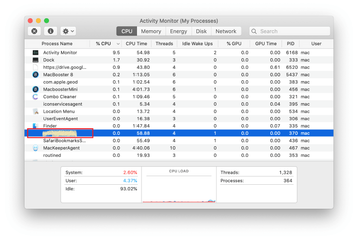
When a follow-up dialog pops up asking if you are sure you want to quit the troublemaking process, select the Force Quit option.
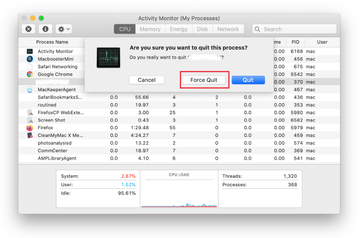
Click on the Go menu icon in the Finder again and select Go to Folder. You can as well use the Command-Shift-G keyboard shortcut.

Type /Library/LaunchAgents in the folder search dialog and click on the Go button.
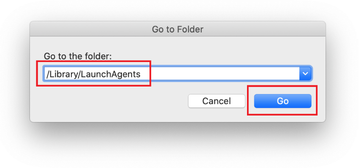
Examine the contents of the LaunchAgents folder for dubious-looking items. Be advised that the names of files spawned by malware may give no clear clues that they are malicious, so you should look for recently added entities that appear to deviate from the norm.
As an illustration, here are several examples of LaunchAgents related to mainstream Mac infections: com.updater.mcy.plist, com.avickUpd.plist, and com.msp.agent.plist. If you spot files that don’t belong on the list, go ahead and drag them to the Trash.
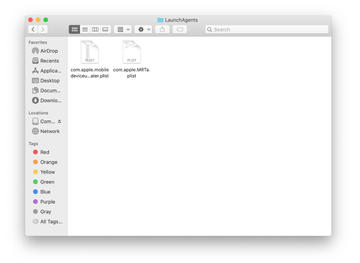
Use the Go to Folder lookup feature again to navigate to the folder named ~/Library/Application Support (note the tilde symbol prepended to the path).
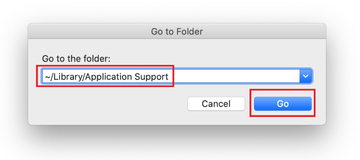
When the Application Support directory is opened, identify recently generated suspicious folders in it and send them to the Trash. A quick tip is to look for items whose names have nothing to do with Apple products or apps you knowingly installed. A few examples of known-malicious folder names are ProgressSite and IdeaShared.
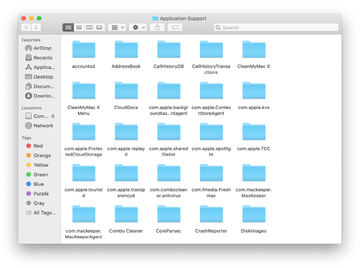
Enter ~/Library/LaunchAgents string (don’t forget to include the tilde character) in the Go to Folder search area.
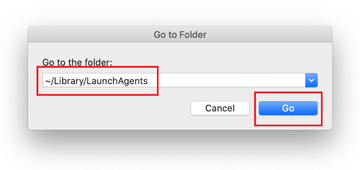
The system will display LaunchAgents residing in the current user’s Home directory. Look for dodgy items related to rogue coreaudiod process (see logic highlighted in subsections above) and drag the suspects to the Trash.
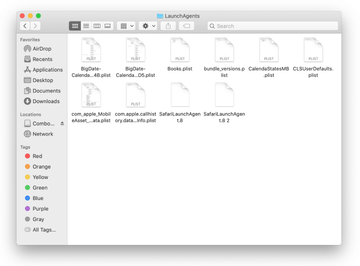
Type /Library/LaunchDaemons in the Go to Folder search field.
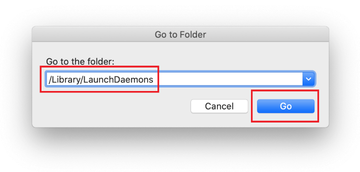
In the LaunchDaemons path, try to pinpoint the files the malware is using for persistence. Several examples of such items cropped by Mac infections are com.apple.sysmond.plist, com.startup.plist, and com.ExpertModuleSearchDaemon.plist. Delete the sketchy files immediately.
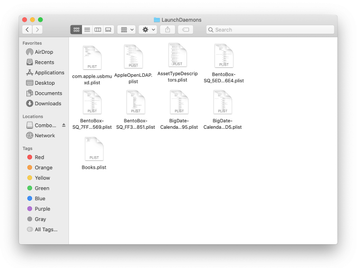
Click on the Go menu icon in your Mac’s Finder and select Applications on the list.

Find the entry for an app that clearly doesn’t belong there and move it to the Trash. If this action requires your admin password for confirmation, go ahead and enter it.
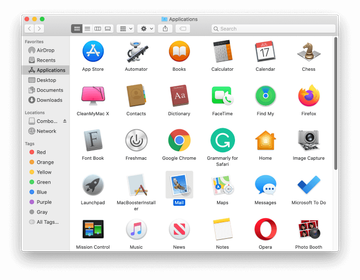
Expand the Apple menu and select System Preferences.
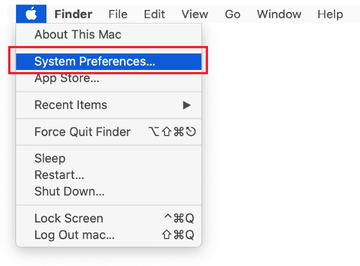
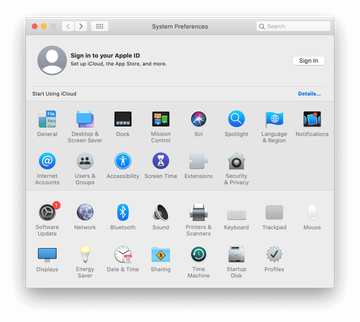
Proceed to Users & Groups and click on the Login Items tab.
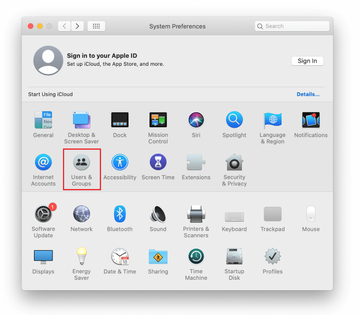
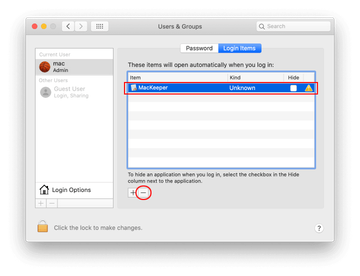
Now select Profiles under System Preferences. Look for a malicious item in the left-hand sidebar. Several examples of configuration profiles created by Mac adware include TechSignalSearch, MainSearchPlatform, AdminPrefs, and Safari Settings. Select the offending entity and click on the minus sign at the bottom to eliminate it.
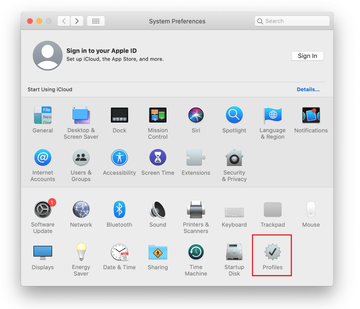
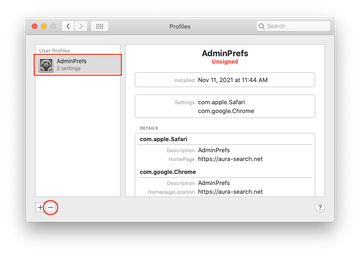
Get rid of coreaudiod problem in web browser on Mac
To begin with, the web browser settings taken over by the coreaudiod copycat malware should be restored to their default values. Although this will clear most of your customizations, web surfing history, and all temporary data stored by websites, the malicious interference should be terminated likewise. The overview of the steps for completing this procedure is as follows:
- Remove coreaudiod virus on Safari
- Open the browser and go to Safari menu. Select Preferences in the drop-down list.
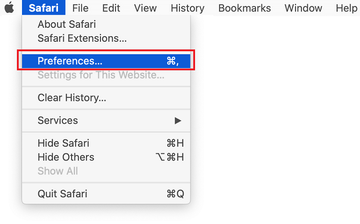
- Once the Preferences screen appears, click on the Advanced tab and enable the option saying “Show Develop menu in menu bar”.
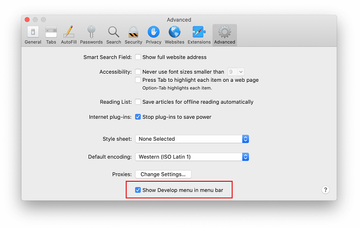
- Now that the Develop entry has been added to the Safari menu, expand it and click on Empty Caches.
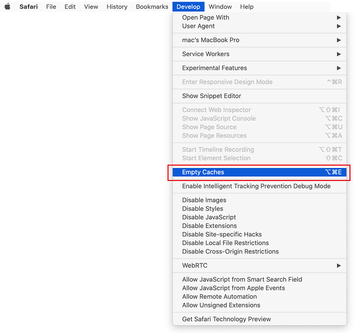
- Now select History in the Safari menu and click on Clear History in the drop-down list.
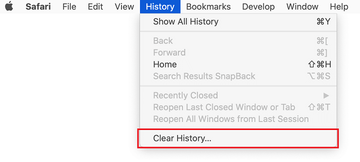
- Safari will display a dialog asking you to specify the period of time this action will apply to. Select all history to ensure a maximum effect. Click on the Clear History button to confirm and exit.

- Go back to the Safari Preferences and hit the Privacy tab at the top. Find the option that says Manage Website Data and click on it.

- The browser will display a follow-up screen listing the websites that have stored data about your Internet activities. This dialog additionally includes a brief description of what the removal does: you may be logged out of some services and encounter other changes of website behavior after the procedure. If you’re okay with that, go ahead and click on the Remove All button.
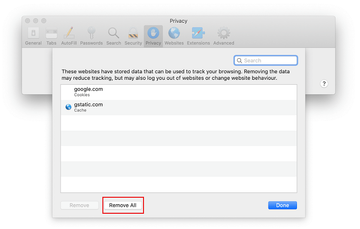
- Restart Safari
- Open the browser and go to Safari menu. Select Preferences in the drop-down list.
- Remove coreaudiod virus on Google Chrome
- Open Chrome, click the Customize and control Google Chrome (⁝) icon in the top right-hand part of the window, and select Settings in the drop-down
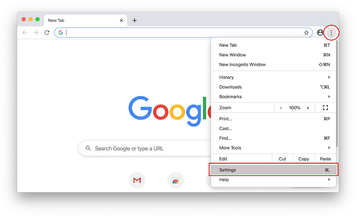
- When on the Settings pane, select Advanced
- Scroll down to the Reset settings section.
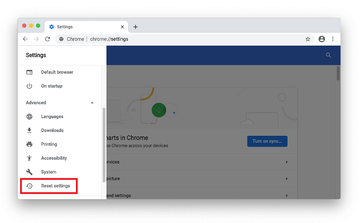
- Confirm the Chrome reset on a dialog that will pop up. When the procedure is completed, relaunch the browser and check it for malware activity.
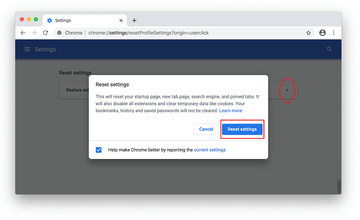
- Open Chrome, click the Customize and control Google Chrome (⁝) icon in the top right-hand part of the window, and select Settings in the drop-down
- Fix coreaudiod problem on Mozilla Firefox
- Open Firefox and go to Help – Troubleshooting Information (or type about:support in the URL bar and press Enter).
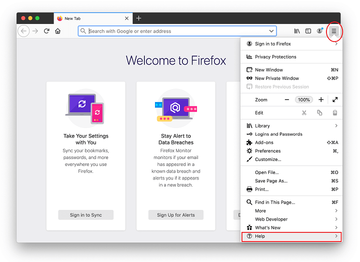

- When on the Troubleshooting Information screen, click on the Refresh Firefox button.
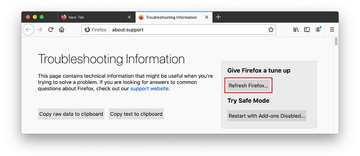
- Confirm the intended changes and restart Firefox.
- Open Firefox and go to Help – Troubleshooting Information (or type about:support in the URL bar and press Enter).
Fix coreaudiod Mac issues using Combo Cleaner removal tool
The Mac maintenance and security app called Combo Cleaner is a one-stop tool to detect and remove coreaudiod virus. This technique has substantial benefits over manual cleanup, because the utility gets hourly virus definition updates and can accurately spot even the newest Mac infections.
Furthermore, the automatic solution will find the core files of the malware deep down the system structure, which might otherwise be a challenge to locate. Here’s a walkthrough to sort out the coreaudiod issue using Combo Cleaner:
Download Combo Cleaner installer. When done, double-click the combocleaner.dmg file and follow the prompts to install the tool onto your Mac.
By downloading any applications recommended on this website you agree to our Terms and Conditions and Privacy Policy. The free scanner checks whether your Mac is infected. To get rid of malware, you need to purchase the Premium version of Combo Cleaner.
Open the app from your Launchpad and let it run an update of the malware signature database to make sure it can identify the latest threats.
Click the Start Combo Scan button to check your Mac for malicious activity as well as performance issues.
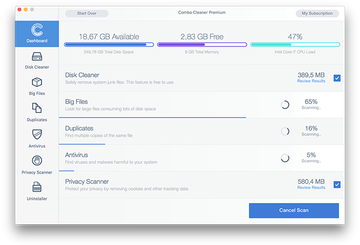
Examine the scan results. If the report says “No Threats”, then you are on the right track with the manual cleaning and can safely proceed to tidy up the web browser that may continue to act up due to the after-effects of the malware attack (see instructions above).
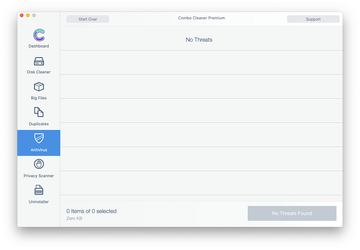
In case Combo Cleaner has detected malicious code, click the Remove Selected Items button and have the utility remove coreaudiod threat along with any other viruses, PUPs (potentially unwanted programs), or junk files that don’t belong on your Mac.
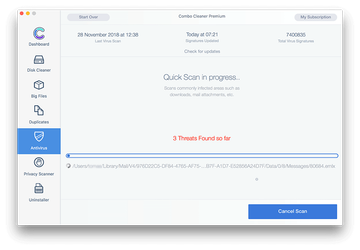
Once you have made doubly sure that the malicious app is uninstalled, the browser-level troubleshooting might still be on your to-do list. If your preferred browser is affected, resort to the previous section of this tutorial to revert to hassle-free web surfing.
